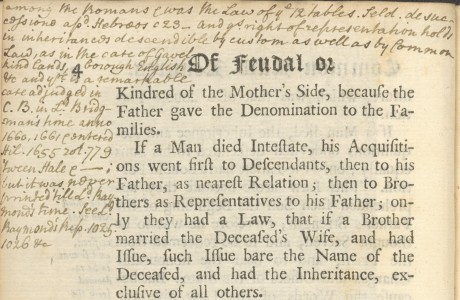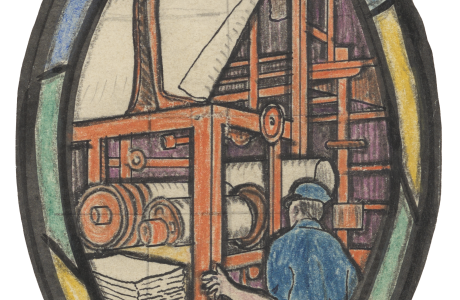Monuments of Imperial Russian Law: The 1649 Sobornoe Ulozhenie
[Sobornoe ulozhenie]. [Moscow], 1649. Special Collections, Harvard Law School Library
Throughout Europe the period 1648 to 1650 was a watershed. During those years in Russia, two major law codes, unprecedented in scope and size, became the first printed law books in Russian history. Following the 1497 and 1550 Sudebniks, there were hundreds of supplemental enactments that circulated in manuscript, as did the Sudebniks themselves. Tsar Aleksei Mikkhailovich (1629-1676) summoned a Land Assembly in late 1648 and gave the delegates two months to prepare the Sobornoe ulozhenie, the most substantial and important achievement of medieval Russian law. The book has no title page; its name is acquired from the Assembly which produced it. The text is in Church Slavonic, the literary language of the time, later to be simplified in 1708 by Peter the Great, who introduced a civil script.
Comprising 967 articles divided haphazardly into 25 chapters, the Ulozhenie consolidated provisions drawn from the Russkaia Pravda, the Sudebniks, the Litovskii statut (Lithuanian Statute) of 1588, countless individual edicts, and introduced some new provisions. Representing the turning point in the transition from feudalism to absolutism in Russia, the Ulozhenie summarized the heritage of the medieval past and simultaneously became the point of departure for Imperial Russian codification. A Latin text was translated by Baron von Mayerburg and printed by him in 1661 (a manuscript Danish translation was prepared by Rasmus Ereboe in 1721 at Copenhagen).
Legal historians continue to debate the extent to which the Ulozhenie represented a reception of Polish-Lithuanian and even Byzantine law in Russia. It addresses sacrilege, deference to the Tsar, the Tsar’s household, forgery and counterfeiting, jewellers, goldsmiths, and coiners, legal procedure, trials of various classes of the population, oaths, land law, succession, land tax, serfdom, robbery, capital crimes, the Cossacks, and liquor licensing. Its severe criminal penalties attracted the attention of foreign observers. The gradual enserfment of the peasantry was confirmed and consolidated by the Ulozhenie, which prohibited peasants from leaving their landlords’ estates for any reason whatsoever.
Three states of the book exist. The print run was substantial, for all local offices and officials needed to be supplied. Printing enabled the Russian administrative apparatus, including the judges, to have for the first time a uniform official authoritative text in quantity of the Tsar’s commands.

See: Richard Hellie (transl. & ed.), The Muscovite Law Code (Ulozhenie) of 1649 (1988).
“Monuments of Imperial Russian Law,” curated by William E. Butler and Mike Widener, is on display Mar. 1 - May 25, 2012, in the Rare Book Exhibition Gallery, Level L2, Lillian Goldman Law Library, Yale Law School.


